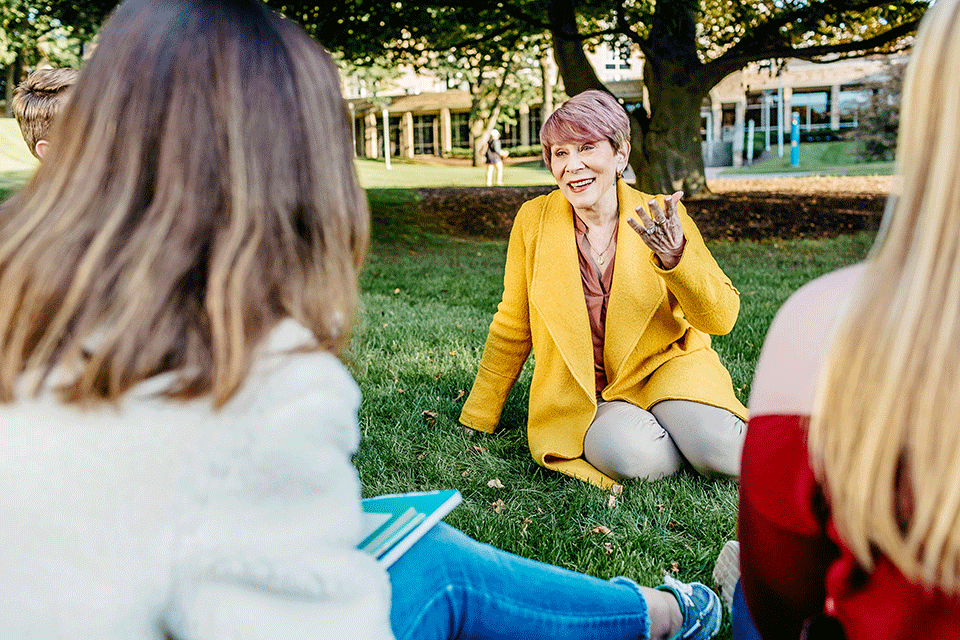School of Arts and Sciences Creates Interdisciplinary Divisions
This spring, the School of Arts and Sciences reorganized its departments and programs into six dynamic divisions, creating spaces for interdisciplinary collaboration among students and faculty.
Each division includes the majors, minors, and certificate programs associated with their respective disciplines and include:
- Behavioral Sciences Division: anthropology, criminology/criminal justice, psychology, public health, and sociology
- Life Sciences Division: biology, sustainability, and athletic performance
- Social Sciences Division: economics, legal studies, political science, sport management, and data analytics
- Natural and Mathematical Sciences Division: biochemistry, chemistry, computer science, mathematics, pharmaceutical chemistry, physics, and cybersecurity
- Humanities Division: American studies, history, philosophy, religious studies, modern languages and cultures, and international studies
- Literature, Communication, and Arts Division: English, media and communication, and public relations
Dr. Ann Marie Fallon, dean of the School, said the reorganization brings anywhere from 15 to 20 faculty members under one division. In the last three years, the School has hired 30 new faculty members in religious studies, sociology, chemistry, and economics, and other disciplines. According to Fallon, bringing more faculty members together under one division means fostering intellectual conversations across disciplines and further opportunities for peer-to-peer mentoring and professional development, something she notes as particularly important for new faculty. The School is investing in the leadership development of its faculty by offering workshops and speaker engagements for those taking on leadership or chair roles within their division.
While students will still be advised by faculty members in their major, the new model will broaden their access to faculty and create connections across majors in their division. They will also see increased accessibility for classes inside and outside of their major as the course scheduling process becomes more streamlined.
“We’re teaching our students to solve problems through an interdisciplinary lens, to ask big questions and approach ‘wicked’ problems from different perspectives,” said Fallon. “Our new organizational model disrupts old systems and silos to create new ways of thinking and generate new knowledge. It also opens up more opportunities for students to explore electives and engage with faculty outside of their major, building and expanding their knowledge.”
For example, Fallon notes, bringing English, media and communication, and the arts under one umbrella creates synergies between ANGLES, the University’s literary magazine, Cardinal Courier, the student-run news organization, and Soaring, Fisher’s academic journal for undergraduate research.
“Our faculty can really collaborate to help students think about where to tell their stories, whether it's through journalism or through creative writing,” Fallon said.
In the Humanities Division, professors are thinking about how to deliver upper-level courses that bring together religious studies, history, and philosophy in a more intentional way. Additionally, Dr. Francisco Plata, associate professor of Spanish, said that moving the Department of Modern Languages and Cultures under the auspices of the Humanities Division has relieved some of his administrative work, providing more time to invest in the Language & Cultures Club. The student organization recently became affiliated through the Student Government Association, and has been growing in popularity.
“Serving as department chair for these past five years has been a tremendous opportunity for professional growth,” said Plata. “However, I look forward to being able, once again, to devote most of my time working with students, as well as on my writing projects. Teaching and scholarship are, after all, the reasons why I decided to be a college professor.”
